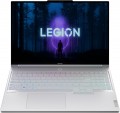Screen resolution
The resolution of the screen installed in the laptop — that is, the size of the screen in pixels horizontally and vertically.
Higher resolution, on the one hand, gives a sharper, more detailed image; on the other hand, it increases the cost of the laptop. The latter is connected not only with the cost of the displays themselves, but also with the fact that in order to work effectively at high resolutions, you need the appropriate filling (primarily a graphics card). This is especially true in games; so if you are looking for a laptop with a high-resolution screen that can effectively "run" modern games — you should pay attention not only to the characteristics of the display, but also to other data (the type and parameters of the graphics card, test results, the ability to work with certain games — see everything below). On the other hand, if the device is planned to be used for simple tasks such as working with documents, surfing the Internet and watching videos, you can not pay much attention to the “hardware” parameters: anyway, they are selected so that the laptop is guaranteed to be able to cope with such tasks on full resolution of the "native" screen.
As for specific numbers, the resolution options that are relevant today can be divided into 4 groups:
HD (720),
Full HD (1080),
Quad HD and
UltraHD 4K. Here is a mor
...e detailed description of them:
— HD (720). This category includes all displays that have a vertical size of less than 1080 pixels. The most popular HD resolution in modern laptops is 1366x768; in devices larger than 15.6 ", 1600x900 is also often found. Other values quite exotic and are rarely used. In general, screens of this standard are now typical mainly for entry-level laptops.
— Full HD (1080). Initially, the Full HD standard provides a frame size of 1920x1080, and it is this resolution that is most often used in laptop screens from this category. However, in addition to this, other resolution options are also included in this format, where the vertical size is at least 1080 pixels, but does not reach 1440 pixels. Examples include 1920x1200 and 2560x1080. In general, Full HD displays provide a good balance between cost, image quality and laptop hardware requirements. Because of this, nowadays they are extremely widespread; matrices of this standard can be found even in low-cost devices, although they are mainly used in more advanced technology.
— Quad HD. A transitional option between the popular Full HD 1080 (see above) and the high-end and expensive UltraHD 4K. The vertical size of such screens starts from 1440 pixels and can reach 2000 pixels. Note that QuadHD resolutions are especially popular in Apple laptops; most often, such devices have 2560x1600 screens, although there are other options.
— Ultra HD 4K. The most advanced standard used in modern laptops. The vertical size of such screens is at least 2160 dots (up to 2400 in some configurations); the classic resolution of a modern UltraHD matrix is 3840x2160, but there are other values. Anyway, a 4K display allows for high image quality, however, it costs accordingly — including due to the corresponding requirements for a graphics adapter; in addition, to work with high resolutions, it can be more convenient to connect an external monitor to the laptop. Thus, such screens are used relatively rarely, and mainly among premium laptops.Brightness
The maximum brightness that a laptop screen can provide.
The brighter the ambient light, the brighter the laptop screen should be, otherwise the image on it may be difficult to read. And vice versa: in dim ambient light, high brightness is unnecessary — it greatly burdens the eyes (however, in this case, modern laptops provide brightness control). Thus, the higher this indicator, the more versatile the screen is, the wider the range of conditions in which it can be effectively used. The downside of these benefits is an increase in price and energy consumption.
As for specific values, many modern laptops have a brightness of
250 – 300 nt and even
lower. This is quite enough for working under artificial lighting of medium intensity, but in bright natural light, visibility may already be a problem. For use in sunny weather (especially outdoors), it is desirable to have a brightness margin of at least
300 – 350 nt. And in the most advanced models, this parameter can be
350 – 400 nt and even
more.
Colour gamut (sRGB)
The colour gamut of the laptop matrix according to the Rec.709 colour model or according to sRGB.
Colour gamut describes the range of colours that can be displayed on the screen. It is indicated as a percentage, but not relative to the entire variety of visible colours, but relative to the conditional colour space (colour model). This is due to the fact that no modern screen is able to display all the colours visible to humans. However, the larger the colour gamut, the wider the screen's capabilities, the better its colour reproduction.
Specifically, sRGB and Rec.709 are the most popular of today's colour models; they have the same range and differ only in the scope (sRGB is used in computers, Rec. 709 is used in HDTV). Therefore, the closer
the colour gamut is to 100%, the more accurately the colours on the screen will match the colours that were originally intended by the creator of the film, game, etc. At the same time, note that such accuracy is not particularly needed in everyday use — it critical only for professional work with colour; and even in such cases, it is more convenient to buy a separate monitor with a wide colour gamut for a laptop, rather than looking for a laptop with a high-quality (and, accordingly, expensive) matrix.
Colour gamut (DCI P3)
The colour gamut of the laptop matrix according to the DCI P3 colour model.
Colour gamut describes the range of colours that can be displayed on the screen. It is indicated as a percentage, but not relative to the entire variety of visible colours, but relative to the conditional colour space (colour model). This is due to the fact that no modern screen is able to display all the colours visible to humans. However, the larger the colour gamut, the wider the screen's capabilities, the better its colour reproduction.
DCI P3 is an advanced colour model primarily used in digital cinemas. It is noticeably more extensive than the standard sRGB, which gives better and more accurate colours. At the same time, in fact, such a model is used mainly for professional film production and other tasks of a similar level; and laptops for such tasks are used quite rarely (although this is also possible). Therefore, coverage according to DCI P3 is very rarely indicated for modern laptops. However it is quite possible to find models on the market with indicators of such coverage at the level of
98% or more, but there are very few of them, and they cost accordingly. So in many cases a more reasonable (and economical) alternative is a separate monitor with good colour gamut; it makes sense to look for a laptop with similar characteristics if the ability to work with colour “on the go”, without being tied to a specific workplace, is fundamen
...tally important to you.3DMark06
The result shown by the laptop processor in 3DMark06.
This test is primarily focused on testing performance in games — in particular, the ability of the processor to process advanced graphics and artificial intelligence elements. Test scores are reported as scores; the higher this number, the higher the performance of the tested chip. Good 3DMark06 results are especially important for
gaming laptops.
Passmark CPU Mark
The result shown by the laptop processor in the Passmark CPU Mark test.
Passmark CPU Mark is a comprehensive test that is more detailed and reliable than the popular 3DMark06 (see above). It checks not only the gaming capabilities of the CPU, but also its performance in other modes, based on which it displays the overall score; this score can be used to fairly reliably evaluate the processor as a whole (the more points, the higher the performance).
Slots
The total number of slots for RAM modules provided in the laptop; in fact — the maximum number of slats that can be installed simultaneously in this model.
Features for upgrading RAM directly depend on this indicator. So, in low-cost models, there is often only
1 slot, and the only upgrade option is to replace the "native" bar. In more advanced devices,
two or even
four slots may be provided, while some of them may be free in the initial configuration.
A special case is embedded RAM; it is more compact and cheaper than removable modules, but does not imply replacement at all. At the same time, in some laptops, the “RAM” is
only built-in, in others it can be supplemented with
one or even two slots for interchangeable strips.
GPU TDP
The amount of heat generated by the graphics processing unit (GPU) during normal operation. TDP is expressed in watts. It allows you to evaluate the thermal characteristics of a laptop and determine its potential for working with high graphics loads. The higher the GPU TDP value, the more power the GPU consumes, which may require a more efficient cooling system to avoid overheating and ensure stable operation of the device. Laptops with higher GPU heat dissipation are better suited for gamers or graphics and video production professionals.
USB 3.2 gen2
Number of
USB 3.2 gen2 ports provided in the laptop. Previously, this interface was known as USB 3.1 gen2 and USB 3.1.
USB of all versions is the most popular modern interface for connecting various peripherals to computer - from keyboards, mice and flash drives to very original devices. It can also be used to charge smartphones and other gadgets. The more USB ports laptop has, the more peripherals you can connect to it without using splitters. Specifically, USB 3.2 gen2 allows you to achieve speeds of up to 10 Gbps, as well as deliver up to 100 W of power to external devices (although the USB Power Delivery function that provides this is not strictly required). Moreover, such connectors are also compatible with peripherals of earlier versions that have classic USB A plugs.

